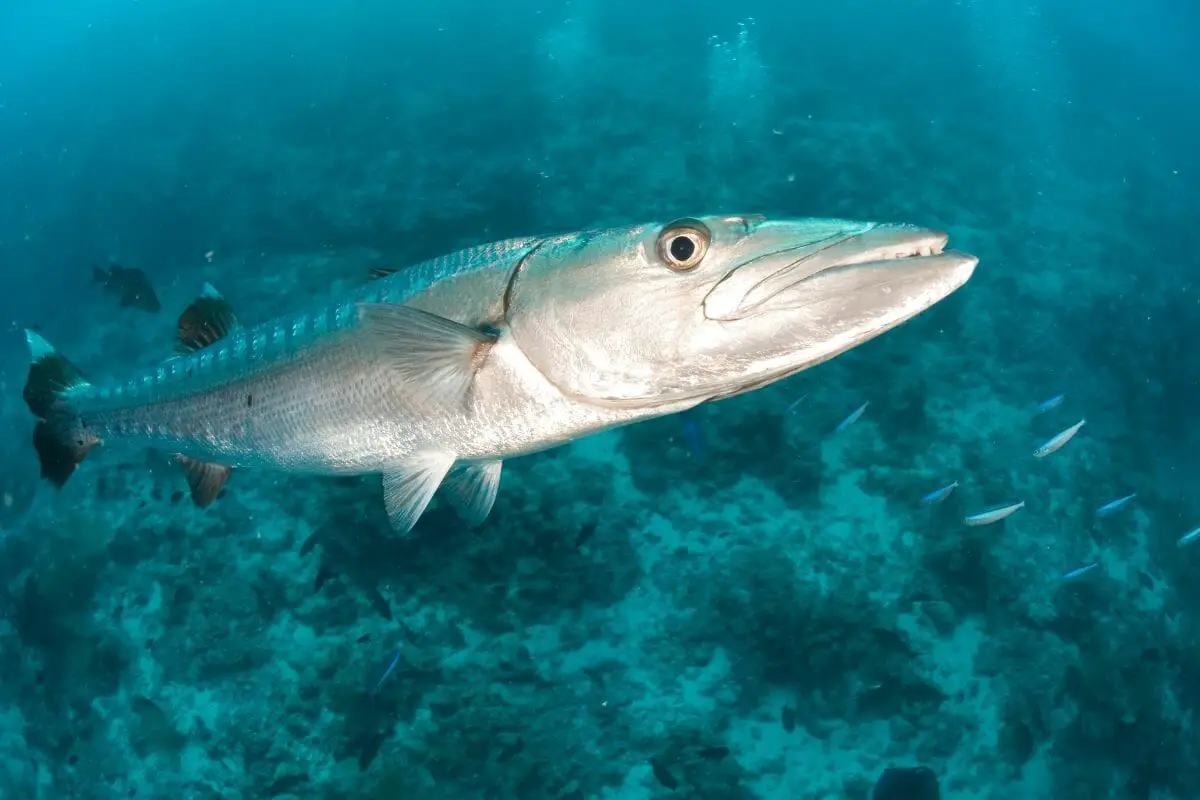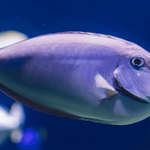The Indian Ocean is home to a diverse range of fascinating animals, many of which remain unknown to most. From the majestic blue whale to the elusive dugong, the ocean’s inhabitants face increasing challenges in their natural habitats. One major issue is the growing threat of pollution and human activity disrupting the delicate marine ecosystems. This often leaves us wondering how these creatures can survive and thrive under such conditions.
Did you know that the Indian Ocean is the warmest of the world’s oceans, creating a unique environment for marine life?
In this guide, we will explore the variety of animals that call the Indian Ocean home, the struggles they endure, and how conservation efforts aim to protect them. You’ll discover what makes these species so special and what needs to be done to ensure their survival for future generations.

Hydrothermal Vent Animals
Hydrothermal vents are very common in the Indian Ocean, and when they were discovered, so were a huge array of vent animals. These animals include things like mussels, gastropods and other animals.
The Hydrothermal vents that are home to these kinds of animals are a result of volcanic eruptions. While these vents are active, these animals will thrive.
In these vents, the animals can convert sulfur into energy and feed off bacteria. They can survive in darkness.
Endangered Species In The Indian Ocean
There are many different endangered species in the Indian Ocean. The habitat of many different animals in the Indian Ocean have been compromised because of the oil and gas drilling that occurs in the ocean.
Certain species of animals have really struggled in the Indian Ocean.
There are several different endangered species in the ocean. Dugongs, also known as sea cows, are particularly endangered. They are mammals who have flippers that look like paddles.
They mainly eat seagrass, which can sometimes be in very low supply. When this happens, they will eat marine algae instead.
These animals are endangered because pollution in the ocean has killed off the seagrass beds in lots of places. As well as this, Dugongs often die from getting trapped in fishing nets.
Turtles are also endangered in the Indian Ocean. The leatherback and loggerhead turtles are also endangered in the Indian Ocean.
The Leatherback turtles eat meat as they are carnivorous. They mainly feed on things like jellyfish. Loggerheads eat fish, shrimp and other animals.
Sharks And Dolphins

There are lots of different species of sharks in the Indian Ocean. These include the great white shark, the whale shark and the great hammerhead shark.
These sharks feed on other fish and smaller sharks. The great white shark feeds on seals, dolphins and lots of other animals.
A species of Bottlenose dolphin also live in the Indian Ocean. These dolphins feed on small fish.
You will also find lots of smaller species of shark in the Indian Ocean that are not as dangerous to humans and other animals. There are also species of porpoises in the Indian Ocean.
Bull Shark
The Bull Shark is a species of shark that is found in the Indian Ocean. It is found in shallow, warm waters along coasts and in rivers (Check out Animals That Live In Rivers). These sharks have very short snouts and they look very specific.
They are very aggressive animals and are the third biggest threat to humans that sharks pose. The tiger shark and the great white sharks are the most dangerous to humans.

Great Barracuda
The great barracuda is a species that is found in parts of the Indian, Atlantic and Pacific ocean(see also: Animals That Live In The Pacific Ocean). They are very large fish and they are one of the biggest species of barracuda in the world.
This barracuda has a very powerful jaw and it is an elongated fish.
These fish are big hunters and they feed off other fish and shrimp. These fish often travel alone. This fish is not of any concern as they are very good hunters. They are known to attack humans, especially divers.
Giant Squid
The giant squid is a very interesting creature (see also: Discover Some Interesting Creatures That Share The Sand With You At Your Favorite Beaches)that lives in the Indian Ocean. It is very large, reaching between 12 and 13 meters.
These creatures are very large for their surroundings. They live very deep down in the ocean and they are a source of prey to animals such as killer whales and certain sharks.
Because these squid live very deep in the ocean, the exact number of these squid is not known. However, they are not thought to be endangered.
Mantis Shrimp

Mantis shrimps are very common in the Indian Ocean. They belong to the same group of species as crabs, lobsters, shrimp and crayfish.
Mantis shrimps range in color and are very impressive animals. They range from brown to vivid, bright colors.
These shrimp are most often found at the base of coral reefs. These shrimp can either be nocturnal or they can be active during the day.
Mantis shrimps can inflict painful wounds as they can cut your hand open if they are handled incorrectly.
They are often caught to be eaten by humans. These animals are often eaten in sushi and they can sometimes be eaten raw.
These shrimps are very interesting because they are the most important predators in many habitats. They are not very well understood because they are often hidden in the sea. They are not considered to be endangered.
Giant Grouper
The giant grouper is a species that is part of the subfamily Epinephelinae. It is from the same family as sea bass and anthias.
Giant groupers are found in the Indo-Pacific Ocean. They are found mainly in shallow waters and they eat a lot of fish, including small sharks.
These fish travel on their own. They are endangered but are not critically endangered. The species is thought to be declining due to loss of habitat and overfishing.
Great White Shark

The great white shark, a top predator, inhabits both coastal and offshore areas of the Indian Ocean. Reaching up to 6 meters in length, these sharks have a distinct countershading pattern—dark on top and light on the bottom—allowing them to ambush prey.
Their diet consists mostly of marine mammals, fish, and seabirds. Great white sharks prefer water temperatures ranging between 12 and 24°C.
Despite their powerful reputation, they face the threat of slow reproduction, making them vulnerable to population decline. Protective measures have been enacted in many regions to preserve their numbers.
Killer Whale
Killer whales, commonly referred to as orcas, are another prominent species in the Indian Ocean. These large marine mammals, part of the dolphin family, can grow up to 9.8 meters in length.
Orcas are known for their social structures and varied diet, which includes fish, seals, and other whales. Their adaptability allows them to survive in both cold and warmer waters.
These intelligent predators are highly organized in hunting, often working in groups. Although they dominate as apex predators, they face challenges like habitat disturbance, which affects their population.
Humpback Whale

Humpback whales are easily recognized by their long pectoral fins and the distinct acrobatic behavior they display. Migrating through the Indian Ocean, they can grow up to 17 meters long.
Humpbacks feed primarily on krill and small fish, employing a technique called bubble-net feeding. These whales breed near the coast of East Africa and islands such as Madagascar.
Conservation actions focus on protecting their breeding zones from human activity like shipping traffic and fishing gear entanglement, helping to ensure their migration and survival.
Sperm Whale
The sperm whale is the largest toothed whale, often found in the deep waters of the Indian Ocean. Reaching lengths of 20 meters, they are well-known for their deep dives, using their large heads filled with spermaceti to help with buoyancy during these dives.
Sperm whales mainly feed on squid and fish. Socially, they live in female-led pods, maintaining strong bonds. Their major threats stem from ship collisions, noise pollution, and fishing gear entanglement.
Efforts to address these threats continue to be essential for the conservation of this species.
Green Sea Turtle

Green sea turtles are a unique species that inhabit the Indian Ocean’s warm coastal waters. Weighing between 150 and 400 pounds, these turtles are primarily herbivores, feeding on seagrass and algae.
They are often found nesting on tropical beaches like those in the Lakshadweep Islands. Green sea turtles face significant challenges from habitat destruction, bycatch in fishing operations, and illegal poaching.
Conservation initiatives focus on protecting nesting grounds and reducing the unintended capture of these turtles in fishing gear to prevent further population decline.
Seahorse
Seahorses, small and unique creatures, dwell in the shallow coastal waters of the Indian Ocean. With their horse-like heads and prehensile tails, they use vegetation such as seagrass beds to anchor themselves.
Seahorses feed on small crustaceans, using their snouts to suck in food. What sets seahorses apart is their reproductive process; males carry fertilized eggs until they hatch.
Their populations are threatened by habitat destruction and their capture for traditional medicine. Preservation of their environments remains a critical area for ongoing conservation work.
Sea Snakes

Sea snakes are a diverse group of reptiles that thrive in the warm waters of the Indian Ocean, with over 60 species spread across coastal and open sea environments.
These venomous creatures are adapted for aquatic life, featuring flattened tails for swimming and extended lung capacity for long dives. While most sea snakes are not aggressive, their venom is potent.
They face threats from habitat degradation and accidental capture in fishing operations. Protecting their natural habitats and reducing bycatch are central to conservation efforts aimed at safeguarding these species.
FAQs
What animal would you find in the Indian Ocean?
In the Indian Ocean, you can find a variety of animals, including Dugongs, leatherback turtles, great white sharks, bottlenose dolphins, and mantis shrimp. This ocean is home to a rich diversity of marine life, ranging from small hydrothermal vent creatures to large predatory fish.
How many animals are there in the Indian Ocean?
The exact number of animals in the Indian Ocean is unknown due to its vast size and depth. However, it hosts thousands of species, including numerous fish, mammals, invertebrates, and unique deep-sea creatures, contributing to its high biodiversity.
What is the largest animal in the Indian Ocean?
The largest animal in the Indian Ocean is the blue whale, reaching lengths of up to 100 feet. These massive marine mammals are the largest animals on Earth and are found in various parts of the Indian Ocean, where they feed on krill and small fish.
Final Thoughts
The Indian Ocean is a vast and diverse ecosystem, home to a myriad of unique and fascinating animals. From the smallest hydrothermal vent creatures to the largest blue whales, the ocean’s biodiversity is remarkable.
Endangered species like the gentle Dugongs and majestic leatherback turtles highlight the need for conservation efforts amidst the challenges of pollution and overfishing. Understanding the variety of life forms, including great white sharks, bottlenose dolphins, and giant squids, underscores the importance of preserving this crucial marine environment.
Protecting the Indian Ocean’s rich tapestry of life is essential for maintaining global biodiversity and ecological balance.
- What Should I Do If A Koala Bites Me? Safety Guide - 2024-05-30
- Are Kangaroos Born Without Hind Legs? A Fascinating Journey - 2024-05-30
- Animals That Look Like Squirrels - 2024-05-30








